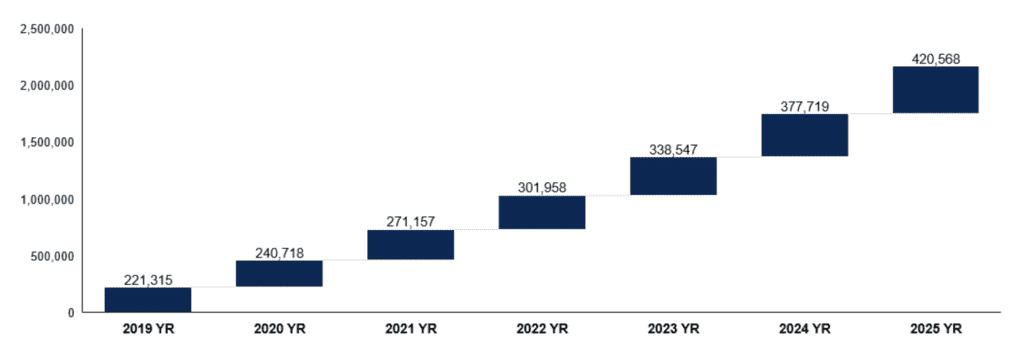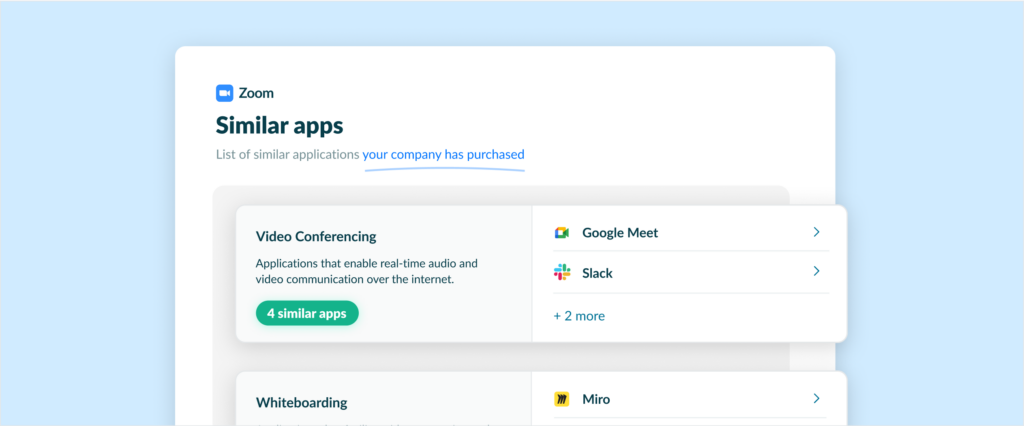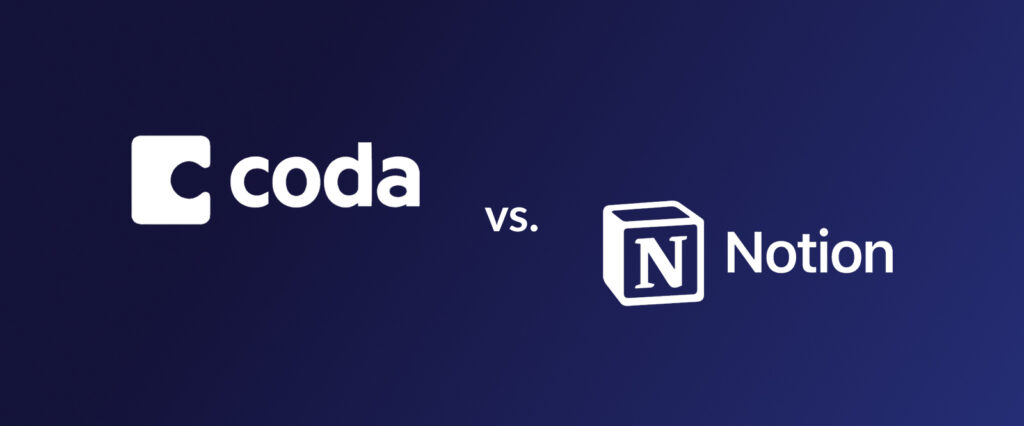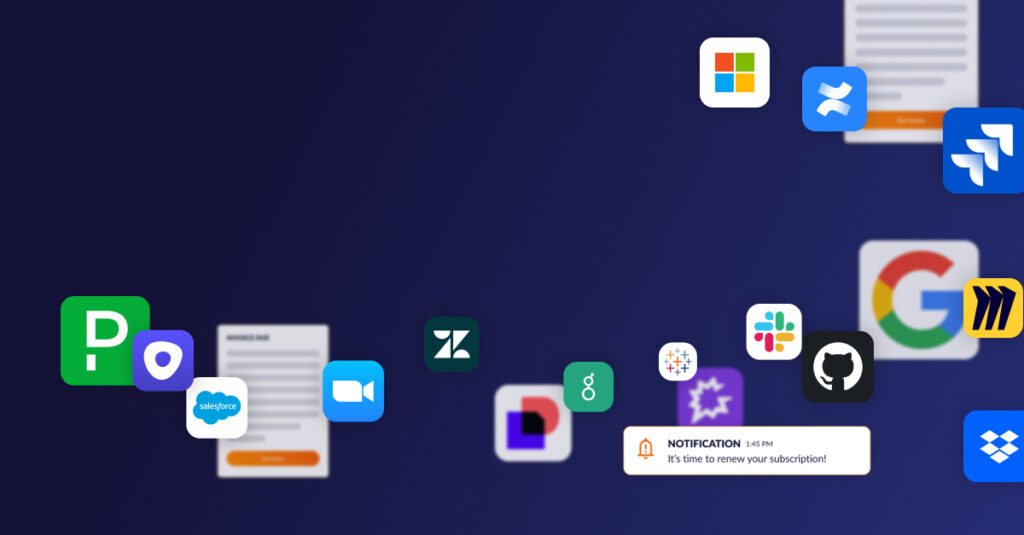
IT Cost Optimization Strategies: Why the Future Hinges on Effective SaaS Management
By Alec Woodward and Arun Lal
Executive Summary
The worldwide enterprise application software market will grow to reach $421B in 2025. And more than 50% of that demand will be met with SaaS solutions. IT cost optimization strategies that aren’t focused on SaaS will be ineffective as Gartner estimates that as much as 55% of SaaS spend is currently wasted.
Effective SaaS Management provides IT with visibility into all of the apps that are in use, which employees use them, and what features are being used and not used. With these insights, businesses have been able to optimize up to 55% of SaaS spend across their portfolios.
Introduction: SaaS dominates the enterprise with $210B in spend by 2025
Despite the recent economic fluctuations, the worldwide enterprise application software market is projected to reach $421 billion in 2025, with a CAGR of 11.8%. And more than 50% of this demand will be met with SaaS solutions. That’s approximately $210 billion in SaaS spend by 2025.
A future where your entire IT portfolio is SaaS is not far away. In fact, that’s already a reality for a number of forward-looking companies.
This move to SaaS fundamentally changes how IT leaders need to approach managing their app portfolios, especially with CFOs today calling on IT to further optimize costs while continuing to drive business outcomes. SaaS at its core is a different beast, and it requires a different approach to effectively manage (learn the difference between software asset management versus SaaS Management).
Forecast: Enterprise Application Software, Worldwide, 2019-2025
Why enterprises struggle with SaaS Management
With massive SaaS proliferation, IT cost optimization requires IT leaders to solve for SaaS cost optimization at scale. However, most companies are not properly equipped to effectively carry out this task as IT teams rely on manual, ad hoc, and siloed systems. These approaches are woefully inadequate for today’s needs. Modern IT leaders need a new approach.
Productiv’s State of SaaS Management survey provides further color and insights into the growing problem of SaaS Management in enterprises. The research found that:
- Lack of visibility into SaaS apps not owned by IT was a top pain point for 59% of surveyed enterprise tech leaders
- Security and compliance issues across different SaaS apps was a leading issue for 57% of leaders
- Nearly half of respondents felt that too much of their time was spend on manually provisioning and managing apps
- Almost every tech leader said their day-to-day operations were impacted by these SaaS Management pain points
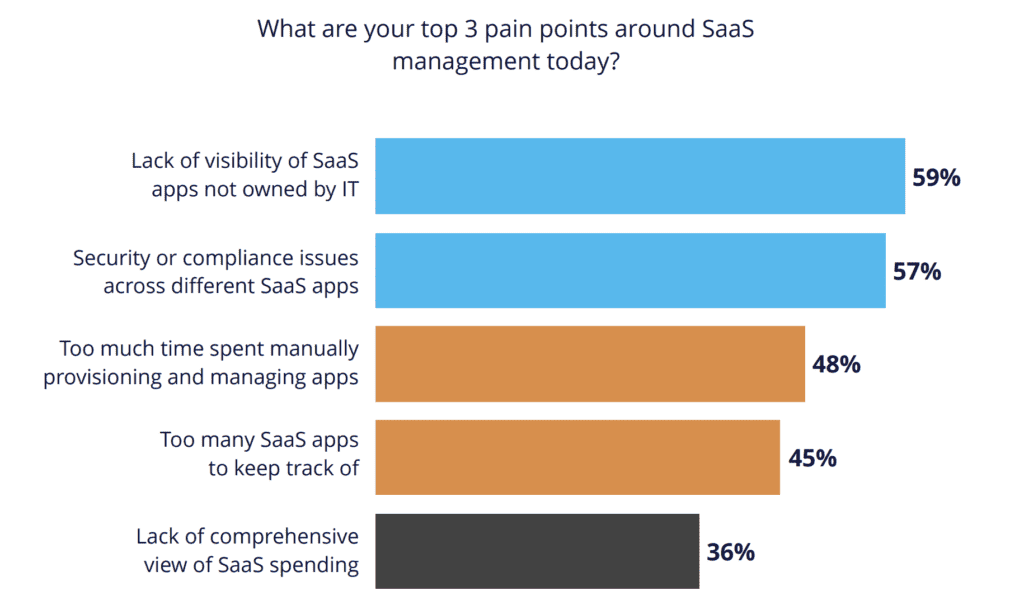
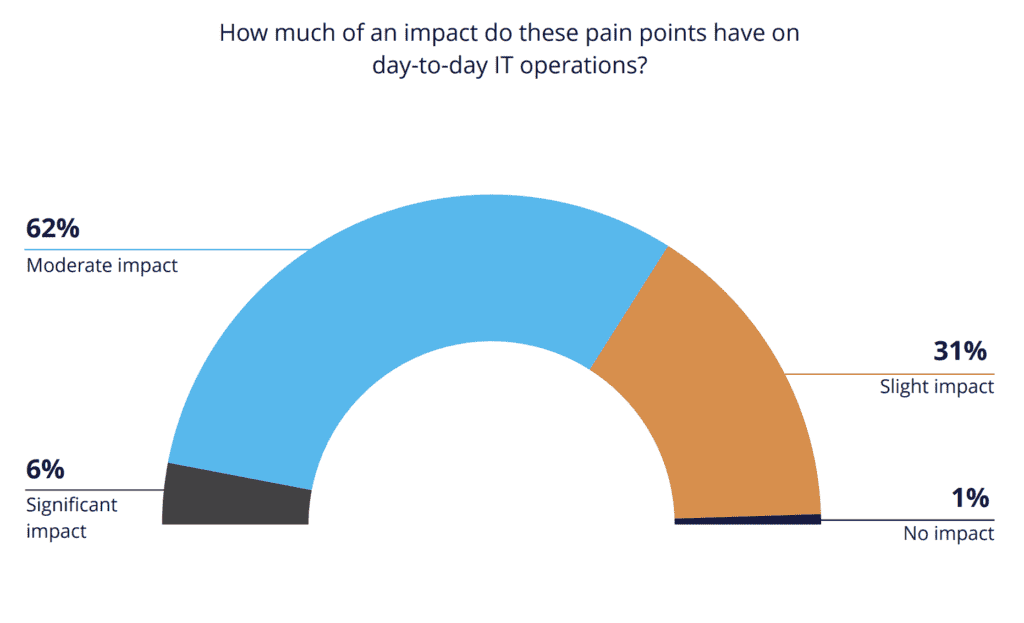
How ineffective SaaS Management impacts IT cost optimization
Gartner estimates that as much as 55% of SaaS spend is wasted or heavily underutilized. This lost budget comes from three main areas.
Wasted SaaS spend: As few as 39% of licenses are used on a regular basis.
Teams are purchasing more licenses than are being actively used by employees. The cost of overprovisioning adds up quickly and can be hard to discover unless you have usage data that goes beyond SSO sign-in information.
Underutilization of resources: Up to 35% of users are provisioned the wrong license tier.
Businesses often provide employees with premium licenses full of functionality that they never end up using. These employees could be just as productive with a cheaper — or even free — license. As a result, large amounts of premium license spend end up wasted.
Low employee productivity and satisfaction: Employees spend up to 5 hours a week searching for information.
If employees don’t have easy visibility into the apps and information available to them, they waste valuable time searching for answers. For a midsize company, this hour-a-day hunt can cost tens of millions of dollars in lost employee productivity. What’s more, if an employee doesn’t think they have a tool they need, they may end up purchasing one themself.
The path to effective SaaS Management
Effective SaaS Management starts with having a real-time understanding of how employees are using apps. To do this, IT must have visibility into all of the apps that are in use, which employees use them, and what features they are using.
However, this insight isn’t enough on its own. IT leaders need to be able to compare this data with the contractual data for each app. From there, you can create a clear strategy on how to best optimize SaaS costs based on app usage insights. So when SaaS renewals roll around, you have the data necessary to negotiate a deal that ensures employees retain the tools they need while the business gets the most value out of its investment.
Here is a good resource from Gartner on how to pick an effective SaaS Management solution: Market Guide for SaaS Management Platforms.
Start reducing SaaS waste and increasing app adoption
Now you know what needs to happen. But how do you make it happen?
Put SaaS Management into action with a strong SaaS Management solution. A platform that enables app discovery, usage insights, and governance will help you start optimizing cost immediately.
Using a framework like the one below will help you run continuous IT cost optimization across your SaaS portfolio.
Framework for Continuous Cost Optimization
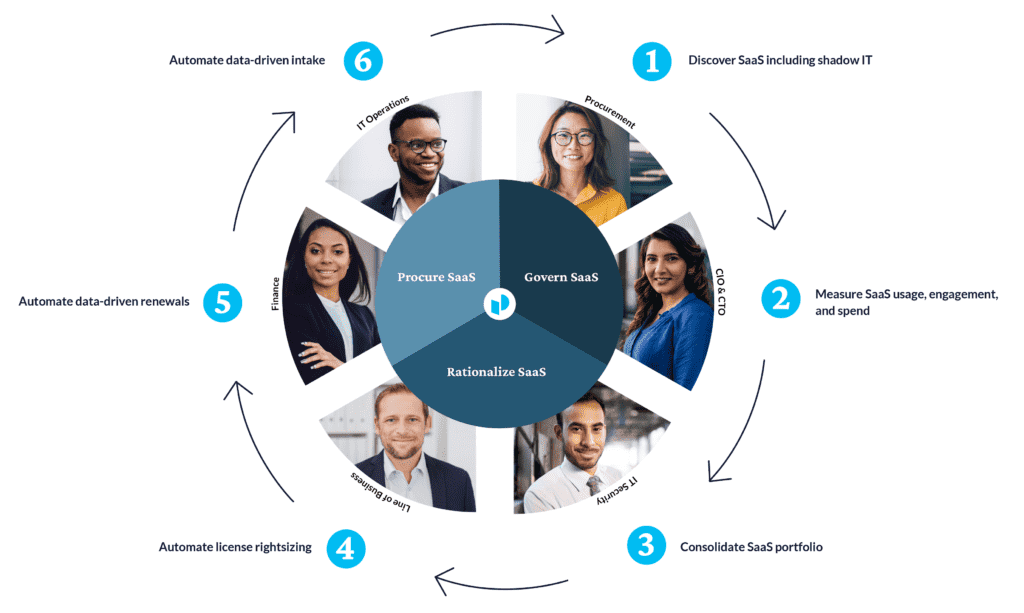
Achieve up to 55% greater SaaS cost savings or avoidance
The benefits of a SaaS Management platform extend far beyond IT. A shared understanding of SaaS usage, spending, and engagement enables IT, procurement, and line of business teams to align on the truth and make better decisions across the organization.
Using the strategies outlined above, businesses have been able to optimize up to 55% of SaaS spend across the portfolio.
The database management company Databricks reduced Zoom and Asana costs 35% by rightsizing their licenses to fit employee usage. And a global toy company saved over $1.4M in one year by optimizing licenses across two applications. Check out more success stories here.
As you can see, there are a lot of opportunities for optimizing your SaaS portfolio spend. You just need the right tools from the right partner to effectively manage your SaaS.
What’s next?
Hear the latest about SaaS Management from Gartner.
Learn what has companies wasting up to $40M annually, and how effective SaaS Management can help you avoid the same fate.
Schedule a demo of Productiv SaaS Intelligence Platform, a data-driven approach to SaaS Management to help you with your IT cost optimization strategy.
About Productiv:
Productiv is the IT operating system to manage your entire SaaS ecosystem. It centralizes visibility into your tech stack, so CIOs and IT leaders can confidently set strategy, optimize renewals, and empower employees.
Learn more today